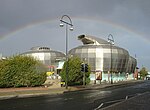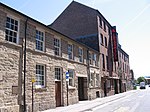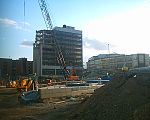Site Gallery
1979 establishments in the United KingdomArt museums and galleries in SheffieldTourist attractions in SheffieldUse British English from August 2015
Site Gallery is an art gallery in Sheffield, England. It specialises in moving image, new media and performance based art. Site Gallery is based at Brown Street in Sheffield's Cultural Industries Quarter. It is an international centre for contemporary art, and has extensive programme of exhibitions, conferences, artists talks and festivals. The gallery's exhibitions often coincide with a public programme including artist talks, symposia, screenings, workshops and reading groups. It was originally called Untitled Gallery.Sharna Jackson has been in post as Artistic Director since July 2018, co-directing alongside Judith Harry.
Excerpt from the Wikipedia article Site Gallery (License: CC BY-SA 3.0, Authors).Site Gallery
Grinders Hill, Sheffield City Centre
Geographical coordinates (GPS) Address Nearby Places Show on map
Geographical coordinates (GPS)
| Latitude | Longitude |
|---|---|
| N 53.376638888889 ° | E -1.4661666666667 ° |
Address
Sheffield City Archives
Grinders Hill
S1 2BX Sheffield, City Centre
England, United Kingdom
Open on Google Maps







